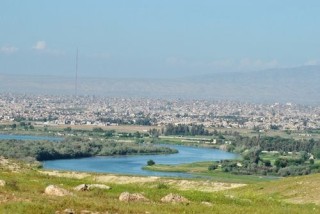Climate change is the biggest challenge facing the Middle East
How the Middle East deals with climate change varies from country to country. Ahmad Abdul-Rahman gives an update of what is happening in the region.
The World Meteorological Organization (WMO) issued a report on climate change in 2021, which showed a clear and dangerous deterioration in a number of important indicators used in assessing the global situation on climate change. According to the report, there has been an increase in harmful emissions, a rise in water levels over the past two decades, and a warming and oxidizing ocean, which reduces the ocean's ability to absorb gases without harming marine life.
The UN Secretary-General António Guterres has strongly criticised the failure of humanity to address the phenomenon of climate change. Consequently, he has made proposals to accelerate the rates of transition to the use of less harmful energy. These include focusing on the transition to renewable energy, expanding the provision of these clean technologies and their resources, increasing private and public investment in clean energy, and discontinuing all subsidies to producers and users of fossil fuels, which now amount to USD 11 million per minute, globally
If all these international indicators are negative and involve considerable risks, then it must be noted that the repercussions on the Middle East are likely to be very severe and more dangerous than in other regions. The average rise in temperature in the Middle East is twice the average globally. Major cities, such as Doha in Qatar, and Khartoum in Sudan, have witnessed a rise in temperatures that sometimes reach 50 degrees Celsius. There are also clear indications that the Gulf countries will suffer from severe water scarcity over the next 50 years, despite significant efforts to resolve this, including expenditure. This is in addition to the repercussions of climate change on the coasts of North Africa and the water tensions between Egypt, Sudan and Ethiopia, which reached the UN Security Council recently. Indeed, these rights are still disputed.
In 2015, Sudan, Ethiopia and Egypt, signed the Declaration of Principles in which they committed themselves to greater cooperation; fair and reasonable use of water; the prevention of significant harm; and peaceful settlement of disputes. Although progress has been made, consensus has not been reached on some important points, including arrangements for drought management, upstream and downstream development of the Renaissance Dam, and a dispute settlement mechanism. The rise in sea temperatures, has led to hurricanes in Pakistan, Iran and the Arabian Peninsula, and has spread drought and reduced water sources, especially in the Arab Mashreq. There is also a real threat to water security in the countries of the Middle East, and the available water in these countries has reached very low levels, compared to many other regions of the world. In addition, there is the absence of an equitable distribution of water among the peoples in the region. For example, the rate of Israel's use of water is more than double that of Palestine.
Drought and water scarcity have implications for public health and food security. Experts believe that the Euphrates and Tigris rivers may completely disappear this century. In its 2022 report, the Intergovernmental Panel on Climate Change stressed that rising temperatures threaten public security, and that the Middle East includes 12 of the 17 countries most vulnerable to water insufficiency. Since 2020, Turkey has seized 90 per cent of the waters of the Euphrates River, which has had repercussions on food and water security in Iraq and Syria. It controls about 44 per cent of the Tigris River. In addition, the Iranian dams have withheld water from the tributaries of the Diyala River in northeastern Iraq, which used to feed the entire province. As a result, Iraq has lost 70 per cent of its water capacity with all the consequent humanitarian and social problems.
Since 2020, there has been growing international interest in achieving zero emissions of harmful gases, especially as the world is on the cusp of the "COP-27" climate conference that will be held in Egypt in November this year. This global event will be followed by the next climate conference in the UAE. Saudi Arabia announced reaching zero national emissions by 2060, and set the UAE a goal of achieving this by 2050. Egypt has now decided to to announce its goals and commitments soon. It had been late in defining its position before the previous conference meeting in Glasgow.
Tensions in the Middle East
It is known that the Middle East is full of conflicts and political tensions. What the region does not need is an exacerbation of tensions, as a result of climate change. This could mean a shortage of water or an inability of fulfilling the economic and social needs of the people. Such problems only create an additional justification for conflicts between the countries of the region.
The international community, as well as governments in the region, must treat climate change as a threat to national security and stability, with very dangerous and complex social and economic repercussions in the Middle East. Climate change will probably engender repercussions in neighboring countries as well. The threat of climate change requires support, along with the transition to clean energy, as well as water poverty. The provision of international financing from industrialised countries, in particular, as well as from the World Bank, is also important.
The leaders and peoples of the Middle East must take wise decisions and adopt prudent policies that balance immediate economic and social needs, long-term strategic assessments and requirements, and structural reform policies that help them contribute positively to climate change. Among these measures is the need to establish regional rules to deal with water sources and control their flow, and the establishment of water banks and regional financing sources that help the region transition to clean technology from traditional sources of energy, and use water more efficiently. Raising the efficiency of agricultural production to ensure food security is also crucial.


Comments